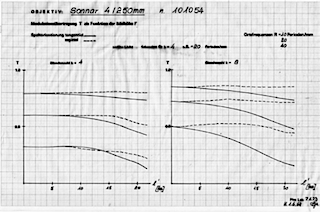
- © 2005-2019 Erwin Puts Contact Me 0

The Zeiss Contarex lenses, manufactured for the redoubtable Contarex line of cameras from 1958 to 1973, have attained superstar status. According to most camera historians these lenses were the best ever, optically and mechanically. Geoffrey Crawley wrote an extentive review of the Contarex system over a period of several months and rated the system second to none.
It is fascinating to note that in those days, a camera test could be published several years after the introduction of the camera and could be published over a longing period of time. Nowadays a test has to be published hours after the introduction of the product and be available immediately on the internet. It is evident that the quality and depth of the reviews are the victim of this instant reviewing cycle.
The Conterex SE was the most advanced electronic camera of its day, a clear indication that the German photo industry could be innovative, but the approach was focussed on engineering excellence and not usability.
The Zeiss lenses are indeed a landmark in optical design: they had the best mechanical mounts ever seen on a 35mm camera, the lenses were quite big and the colour balance was adjusted such that all lenses would give the same colour rendition, a first in its day. Most lenses focussed more closely than the competition and Zeiss put an enormous effort in the optical performance.
This performance has been object of some speculation, and when I discussed this topic with the current head of the Zeiss optical lab, he offered to give me the MTF graphs of tehse lenses for comparison purposes
MTF graphs
The graphs to be published ghere are unique as they are absolutely original drawings from the Zeiss optical department. It is clear that the use of the MTF graphs is not a recent phenomenom. Tee lenses were designed around 1955 to 1965 and the graphs are calculated and drawn on graphing paper, again an indication that the method was well-known, but the computer could not handle the output.
The graphs do show one major characteristic. Zeiss designers gave the most attention to flatness of field and the reduction of astigmatism. This can be seen most clearly in the MTF for the Planar 50mm lens. The graphs are almost straight lines and the difference between sagittal and tangential lines is marginal. Note too than stopping down does improve the definition of fine detail, but not the overall contrast, which stays at the same level frm f/2 to f/5.6. Here we see quite clearly that the choice for high overall contrast (the Leica option) does imply a reduction in the correction for flatness of field and astigmatism.
The special smoothness and depth of the Contarex lenses can be explained by these curves. The characteristics of the Contarex lenses are reminiscent of the Hasselblad lenses. Stopped down a bit they exhibit a remarkable finesse of gradation and depth. They may not be the sharpest lenses ever, but the rendition of shape outlines and surface details is most pleasing and subtle like a poem.
Hologon 8/15mm
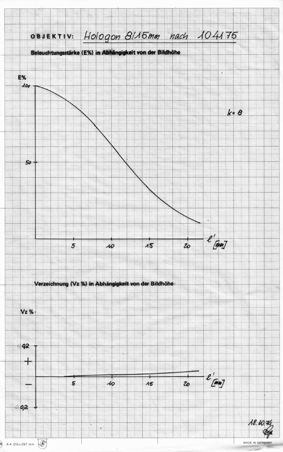
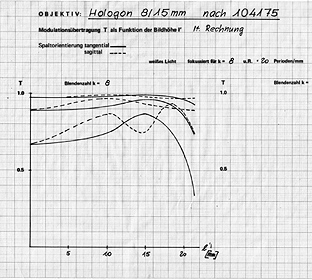
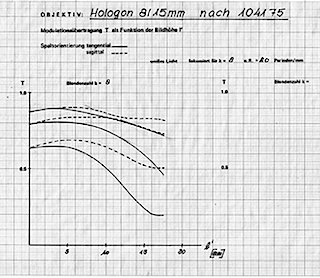
Distagon 4/18mm
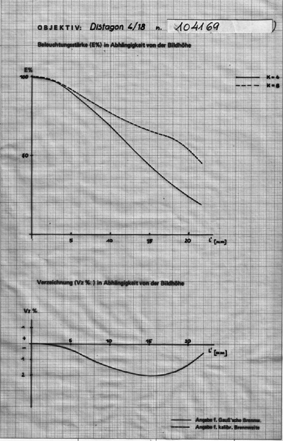
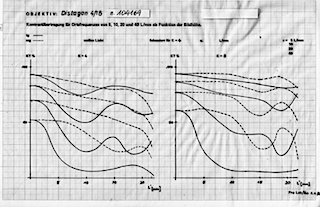
Biogon 4.5/21mm
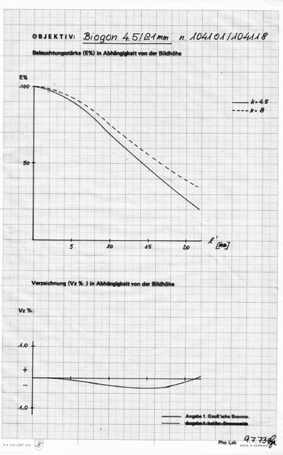

Distagon 4/35mm
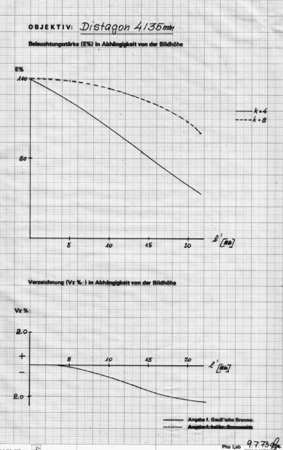

Distagon 2/35mm
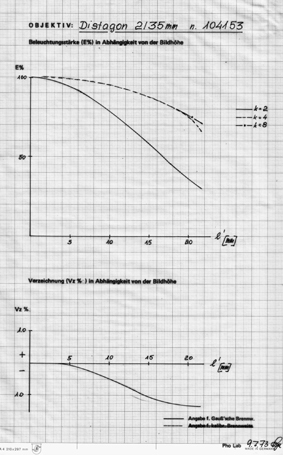
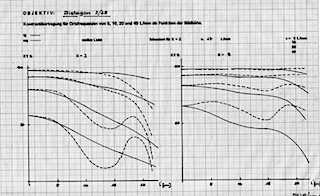
Planar 2/50mm
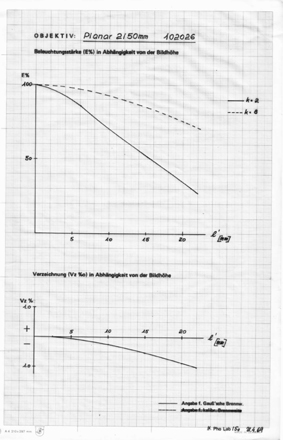

Tessar 2.8/50mm
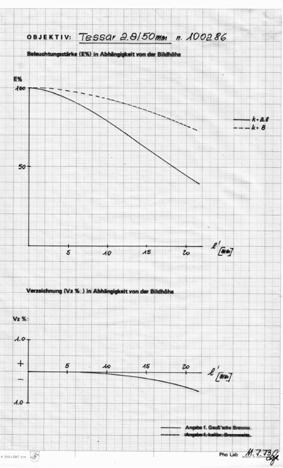
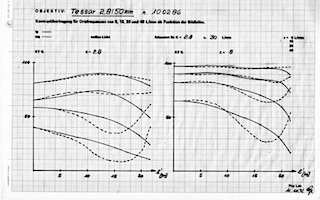
Planar 1.4/55mm
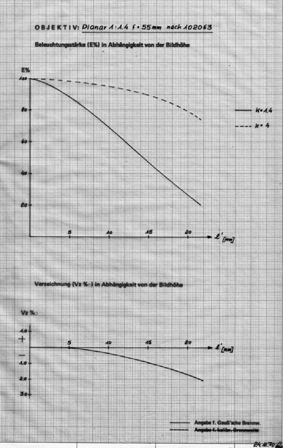
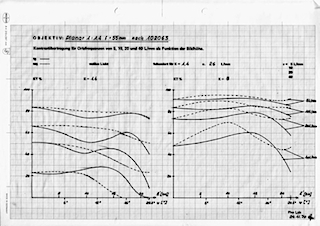
Sonnar 2/85mm
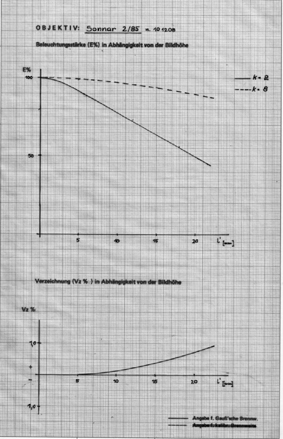
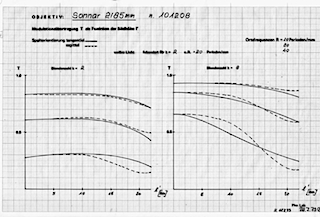
Sonnar 4/135mm
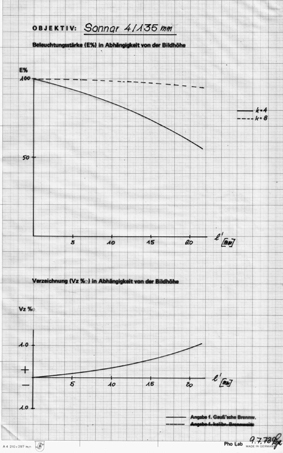
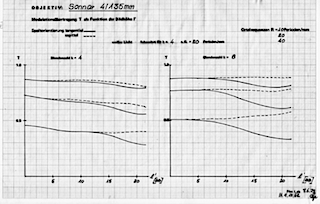
Sonnar 4/250mm
